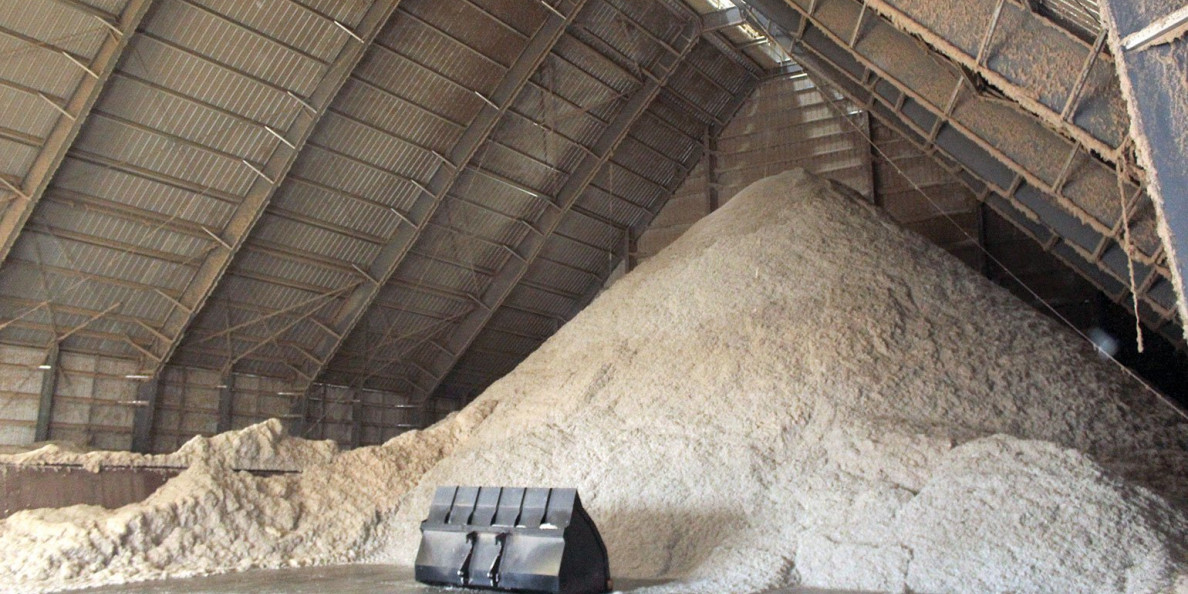Pounds of lint pay the bills for cotton farmers. Cottonseed provides gins a valuable revenue source.
Smaller seed equals more lint. Larger seed equals more value to the gin.
The goal for cotton breeders, says Kater Hake, vice president for agricultural and environmental research at Cotton Incorporated, has been to improve yield and quality, not higher seed value.
"We see a tradeoff," Hake said during the recent Southern Cotton Ginners Association annual conference in Memphis, Tenn., "between seed size and yield."
Finding a compromise might include altering the way cotton breeders evaluate new varieties, a time-consuming prospect.
In the meantime, Hake said, Cotton Incorporated is looking for ways to stimulate demand for cottonseed.
The industry struggles to understand how to find a compromise. Hake said including seed size in new variety development complicates breeders' efforts. "The more characteristics they try to add, the more complex their task," he said. "The more monkeys you have, the harder it is to keep them in the tree."
Desired traits
Hake showed charts depicting traits growers, ginners and seed companies desire. Growers look for yield and fiber quality. They also want good vigor and dry seed.
Ginners want larger seed, uniform oil content, and high seed count. "That's not on the grower's list," Hake said.
Seed companies want dry seed and are also concerned with count.
"Still, we see more in common than not," Hake said.
He looked at the main market for cottonseed, dairies. "The dairy industry loves oil," Hake said. They also want dry seed that doesn't rot."
Uniform oil content is also good for producers because it gives them faster germination under stressful growing conditions.
The ginner has many of those same objectives — high oil content, a high compensated price and large, uniform seed.
Oil mills
Crushers also like high oil content. "We call them oil mills for that reason," Hake said. "They like high oil prices because that's what they're delivering."
Planting seed companies want to provide growers with a product that's "going to come out of the ground running. They are concerned about their cost of cotton seed."
Hake says Cotton Incorporated sees opportunities to promote the value of cottonseed and cottonseed oil for both animal and human consumption.
The dairy industry, he said, has changed significantly in recent years, primarily with smaller operations going out of business, replaced by larger, more high-tech operations.
"The number of cows has not declined," Hake said. "Dairies have gotten larger. And young, professional nutritionists are managing rations. We have to incentivize the dairies and the cattle industry to feed cottonseed without giving them a cheaper price. That means stimulating demand.
"We are trying to reach those professional nutritionists with nutritional data so they don't think about cottonseed as just another mix in the ration, but as something special."
He said data developed decades back are being reviewed and updated to meet the needs of a changed dairy industry.
Human nutrition
Human nutrition is another avenue worth exploring, Hake said.
Cottonseed oil is healthy, he explained. Recent research has established that cottonseed oil is much better for your lipid profile than olive oil, Hake said. Cottonseed oil lowers triglyceride levels. "And the good cholesterol goes up and the bad cholesterol goes down. It has heart health benefits."
Hake said several studies support the premise. One, an independent study out of Mexico, he said, is particularly important because it does not "have Cotton Incorporated fingerprints all over it."
That and several peer reviewed studies are very valuable in promoting the benefits of cottonseed oil, he added.
Hake also noted advantages over palm oil and suggested cottonseed oil could substitute for fish oil, which has fallen out of favor as a heart healthy product.
Marketing
The new data on animal and human nutrition will affect Cotton Incorporated marketing, Hake said. New targets include animal nutrition conferences, ads featuring the value of cottonseed to livestock, and working with dairy nutritionists.
Foodies, he said, offer another opportunity for cottonseed oil marketing.
"We're going to try to get people to appreciate and recognize that cottonseed is healthy. We want to get foodies, restaurants, chefs and cooks excited about cottonseed. We're trying to reach them with that approach — the value of cottonseed oil."
Hake said to convey that message, the cotton industry needs to learn more.
"We need to understand oil," he said. "Higher oil content helps everyone. It helps the grower because he gets a better stand. It helps the ginner because he has a more valuable product. The crushers and the feeders also benefit."
Technology will help. Hake explained that a University of Texas scientist has developed a tabletop MRI machine to test oil content in cottonseed.
"It works on just 20 seeds at a time and goes very, very fast. It's expensive, but once you have it set up, you can have students run it.
"So far, we have gone through 2,300 breeding lines, providing data to the breeders because if they're going to give you varieties with higher oil content, they have to measure it."
Wide range of oil content
He said tests show a wide range of oil content between varieties — 14% to 23% oil content. That's a lot of variability but offers opportunity for breeder selection.
Other studies are examining seed moisture, an increasingly important factor with more producers harvesting cotton at a higher moisture content.
"With round modules, that higher moisture content stays there a long time," Hake said, increasing the potential for gin and seed storage facility fires.
Hake and other speakers at the annual conference acknowledge that seed size remains a dilemma for the industry. Finding a solution, or at least a compromise, that offers opportunity for growers, ginners, crushers and seed companies is a priority.


